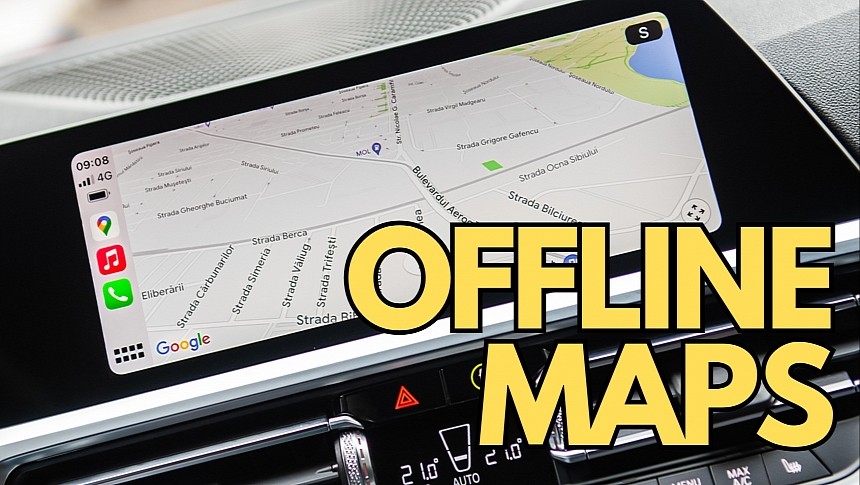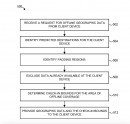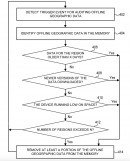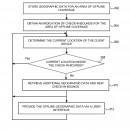The availability of up-to-date offline maps is often a game changer for drivers relying on sat-nav software. Without an Internet connection, applications like Google Maps, Apple Maps, and Waze can become useless, as they must be online to download map data and traffic information and look for alternate routes.
Google Maps, Apple Maps, and several other navigation solutions come with offline map support, allowing users to navigate without an Internet connection.
In every case, users must download the offline maps while still online. The process involves selecting the area included in the offline maps, downloading the data, and getting updates whenever new map versions are available.
Most apps, including Google Maps and Apple Maps, can automatically download new maps in the background. However, if you travel beyond the borders of your selection and offline maps are no longer available for the region, navigation stops working.
It's why Google has been looking into ways to address this shortcoming, and a possible solution could come from a technology whose role is to "improve offline map data availability." A patent filed in August 2023 and published in December provides us with a closer look at how the new system could improve offline map availability.
The system is based on a simple yet useful concept: if Google Maps doesn't detect offline maps for the destination you navigate to, it can automatically download it while an Internet connection is still available. The user wouldn't be prompted to manually download the data, as Google's purpose is to deliver a seamless navigation experience.
When you plan a journey and don't want to use your Internet connection or Google Maps can't work online because of the lack of a data connection or cellular signal, you can download the maps before you begin driving. You can do this on the Wi-Fi connection at home or using the data connection on the mobile device.
Google Maps requires you to select the area that you must include in the offline maps. I've always complained that the map selection process is a pain in the neck, as Google Maps doesn't allow you to download the maps by selecting a specific city or region. You must use an on-screen selection box to define the area, so it's easy to mistakenly exclude a road or region from the selection.
However, Google's patent stems from the idea that your destination is outside the selection, meaning that Google Maps wouldn't be able to offer navigation from the starting point to the defined address without going online.
It all starts with Google Maps checking for the availability of offline maps when setting up a new route. The application can determine if you want to navigate in offline mode and check if the necessary data is available to provide guidance from one end to the other.
If the data is not available, it can automatically download the offline maps in the background, making sure the navigation can continue without an Internet connection.
The more challenging part is when you drive with Google Maps on the screen, but no destination is defined in the app. The application can try to guess where you go based on previous trips or by checking your searches, eventually running a similar check to determine if offline maps are available. If they're not, Google Maps can initiate a download before the application loses the Internet connection.
The system also includes another component. Google Maps can create a database of locations where you're likely to encounter a cellular signal drop based on crowdsourced data. The application would try to guess when you go through such a spot based on similar criteria and download the offline maps to offer uninterrupted navigation.
Eventually, the system can also download the required maps when Google Maps is online, but your destination is in a region where you could lose your Internet connection. All the aforementioned results are included in a more advanced analysis to determine your destination (when driving without an address configured in Google Maps) and whether offline maps are available.
It's how Google Maps could offer a seamless experience at all times, especially when you drive outside the offline map selection and are expected to lose the Internet connection.
The patent seems to be related to another technology that Google described recently in a separate patent. It's called " prioritized provision and retrieval of offline map data" and describes a way to download offline maps when the application estimates a potential connection drop as you drive to the destination.
In both cases, Google's purpose is to allow Google Maps to offer uninterrupted navigation, no matter the strength of the cellular signal and the data connection.
Both systems are still in the patent stage, but Google seems to be exploring more ways to improve Google Maps in offline mode. As a result, I wouldn't be surprised to see the company pursuing these ideas, especially as the competition is getting fiercer in this space, and Apple is also more committed to offline navigation.
In every case, users must download the offline maps while still online. The process involves selecting the area included in the offline maps, downloading the data, and getting updates whenever new map versions are available.
Most apps, including Google Maps and Apple Maps, can automatically download new maps in the background. However, if you travel beyond the borders of your selection and offline maps are no longer available for the region, navigation stops working.
It's why Google has been looking into ways to address this shortcoming, and a possible solution could come from a technology whose role is to "improve offline map data availability." A patent filed in August 2023 and published in December provides us with a closer look at how the new system could improve offline map availability.
When you plan a journey and don't want to use your Internet connection or Google Maps can't work online because of the lack of a data connection or cellular signal, you can download the maps before you begin driving. You can do this on the Wi-Fi connection at home or using the data connection on the mobile device.
Google Maps requires you to select the area that you must include in the offline maps. I've always complained that the map selection process is a pain in the neck, as Google Maps doesn't allow you to download the maps by selecting a specific city or region. You must use an on-screen selection box to define the area, so it's easy to mistakenly exclude a road or region from the selection.
It all starts with Google Maps checking for the availability of offline maps when setting up a new route. The application can determine if you want to navigate in offline mode and check if the necessary data is available to provide guidance from one end to the other.
If the data is not available, it can automatically download the offline maps in the background, making sure the navigation can continue without an Internet connection.
The more challenging part is when you drive with Google Maps on the screen, but no destination is defined in the app. The application can try to guess where you go based on previous trips or by checking your searches, eventually running a similar check to determine if offline maps are available. If they're not, Google Maps can initiate a download before the application loses the Internet connection.
The system also includes another component. Google Maps can create a database of locations where you're likely to encounter a cellular signal drop based on crowdsourced data. The application would try to guess when you go through such a spot based on similar criteria and download the offline maps to offer uninterrupted navigation.
It's how Google Maps could offer a seamless experience at all times, especially when you drive outside the offline map selection and are expected to lose the Internet connection.
The patent seems to be related to another technology that Google described recently in a separate patent. It's called " prioritized provision and retrieval of offline map data" and describes a way to download offline maps when the application estimates a potential connection drop as you drive to the destination.
In both cases, Google's purpose is to allow Google Maps to offer uninterrupted navigation, no matter the strength of the cellular signal and the data connection.
Both systems are still in the patent stage, but Google seems to be exploring more ways to improve Google Maps in offline mode. As a result, I wouldn't be surprised to see the company pursuing these ideas, especially as the competition is getting fiercer in this space, and Apple is also more committed to offline navigation.





















